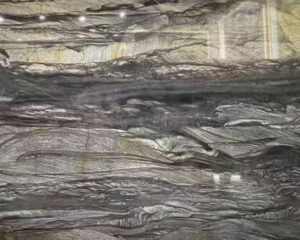Petit antique marble is a captivating natural stone renowned for its timeless beauty and versatility in architectural and interior design. With its unique characteristics and rich history, this exquisite marble has gained popularity among designers, homeowners, and art enthusiasts alike. In this article, we will delve into the origins, qualities, applications, care, and maintenance of petit antique marble, uncovering its enduring charm and exploring the various ways it can enhance spaces with its unparalleled elegance.
Origins of Petit Antique Marble
Petit antique marble originates from the ancient quarries of Greece and Italy, where it has been extracted for centuries. The marble is formed through a metamorphic process, where limestone undergoes intense heat and pressure, resulting in a distinctive veined pattern and a refined texture. The craftsmanship and expertise of stonemasons are integral to extracting and processing this precious material, ensuring that its innate beauty is fully realized.
Distinctive Characteristics
Color Palette and Veining
Petit antique marble boasts a mesmerizing range of colors, including warm tones of beige, cream, and light brown, with subtle undertones of gray. The presence of intricate veining patterns adds depth and character to the stone, creating a sense of movement and visual interest. These natural variations make each piece of petit antique marble truly unique and a testament to its natural origins.
Texture and Finish Options
The texture of petit antique marble is smooth and polished, providing a luxurious feel to any surface it adorns. It is commonly available in honed and polished finishes, allowing for versatile design applications. The honed finish offers a matte appearance, while the polished finish enhances the marble’s inherent luster, reflecting light and elevating the overall aesthetics of a space.
Applications of Petit Antique Marble
Flooring and Walls
Petit antique marble is a popular choice for flooring due to its durability and timeless appeal. Its warm tones and distinct veining patterns add a touch of sophistication to both traditional and contemporary interiors. Additionally, it can be used on walls, creating an elegant backdrop for any room and infusing a sense of grandeur.
Countertops and Vanity Tops
The resilience of petit antique marble makes it an excellent option for countertops and vanity tops. Its natural resistance to heat and scratching, combined with its captivating beauty, makes it a perfect choice for kitchens and bathrooms, enhancing their aesthetic appeal while providing functional surfaces that withstand the test of time.
Fireplaces and Mantels
The rich colors and veining patterns of petit antique marble lend themselves perfectly to fireplace surrounds and mantels. Whether used in traditional or modern settings, the addition of petit antique marble can transform a fireplace into a focal point, creating an inviting atmosphere and an element of refined elegance.

Care and Maintenance
To preserve the beauty and longevity of petit antique marble, proper care and maintenance are essential. Here are some guidelines to follow:
Regular Cleaning
Use a soft, damp cloth or a pH-neutral stone cleaner to wipe the surface of the marble regularly. Avoid abrasive cleaners that may damage the finish. Blot up spills promptly to prevent staining.
Sealing
Petit antique marble should be sealed periodically to protect it from stains and moisture. Consult with a stone professional to determine the appropriate sealant and frequency of sealing based on the specific marble used and its location within the home.
Avoid Harsh Chemicals and Sharp Objects
Refrain from using acidic or abrasive cleaning agents on the marble, as they can etch or scratch the surface. Also, avoid placing sharp objects directly on the marble to prevent scratching.
Incorporating Petit Antique Marble in Modern Design
Minimalist Elegance
Pairing petit antique marble with clean lines and minimalist decor elements can create a striking contrast, highlighting the marble’s intricate patterns and adding a touch of refined opulence to a contemporary space.
Mixed Materials
Incorporating petit antique marble alongside other materials, such as wood or metal, can result in a visually captivating composition. Whether it’s a marble-topped coffee table or a marble accent wall paired with reclaimed wood, this juxtaposition can add depth and interest to an interior.
Sustainability and Ethical Sourcing
In recent years, there has been an increased focus on sustainable and ethically sourced materials in the design industry. Petit antique marble aligns with these values as it is a natural stone that is extracted from quarries using responsible practices. Reputable suppliers and manufacturers adhere to strict guidelines to ensure minimal environmental impact and fair labor conditions. By choosing petit antique marble, designers and homeowners can contribute to a more sustainable and socially responsible approach to interior design.
Conclusion
Petit antique marble’s timeless beauty, unique veining, and versatile applications make it a cherished choice for architects, designers, and homeowners seeking to infuse elegance and sophistication into their spaces. Its enduring appeal, combined with proper care and maintenance, ensures that petit antique marble will continue to adorn interiors and evoke a sense of awe for generations to come. Whether used as flooring, countertops, or decorative accents, petit antique marble remains a symbol of timeless luxury and refined taste.
Related Products





